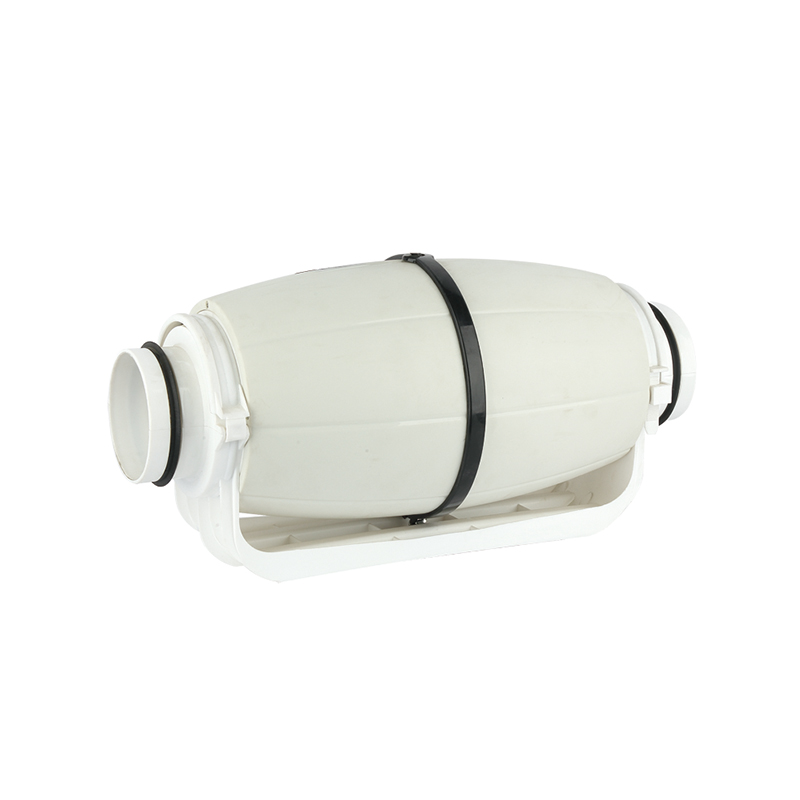Qinlang focuses on providing high-quality products and considerate services, and is committed to meeting every expectation of our customers.
The DKT-133 Cooling Ventilation Double Inlet Air Conditioning Fan is d...
See DetailsIn the ever-evolving field of indoor air management, modern buildings—whether residential, commercial, or institutional—demand ventilation systems that are both powerful and unobtrusive. Today's solution lies in a clever combination of two specialized ventilation components: the Pipe Silent Fan and the Booster Duct Fan. Together, these devices form the backbone of silent and efficient air distribution networks, addressing growing concerns over indoor air quality, energy use, and acoustic comfort.

The Pipe Silent Fan is designed specifically to deliver airflow with minimal noise. Unlike traditional fans that often cause disruptive humming or vibrations, the Pipe Silent Fan incorporates advanced motor insulation, vibration-dampening mounts, and aerodynamically optimized blades. These design choices result in ultra-quiet performance, making it ideal for bedrooms, libraries, offices, and other noise-sensitive environments.
While the Pipe Silent Fan ensures a peaceful atmosphere, it often needs support in larger or more complex ducting systems where airflow can weaken due to long distances or multiple bends. This is where the Booster Duct Fan comes into play. A Booster Duct Fan amplifies airflow in extended or overloaded ducts, ensuring that the intended air exchange volume reaches every room or zone without loss of pressure or performance.
By installing a Booster Duct Fan strategically along the ductwork, property owners can eliminate dead spots—areas where airflow is too weak to provide proper ventilation. It's particularly beneficial in multi-room buildings, basement extensions, or large office floors where standard fans fall short. When paired with a Pipe Silent Fan, the result is a powerful yet quiet ventilation system that can accommodate a wide range of structural and environmental needs.
Moreover, both the Pipe Silent Fan and the Booster Duct Fan contribute to energy efficiency. Because they work in tandem to maintain steady airflow, the system requires less energy to overcome resistance or correct imbalances. This coordinated operation reduces strain on the central HVAC system and extends the lifespan of more expensive components like air conditioning compressors or heating units.
Another critical advantage is the improved indoor air quality. The Pipe Silent Fan is frequently used in air purification or heat recovery systems to circulate clean air gently throughout a space, without generating turbulent airflow. At the same time, the Booster Duct Fan ensures that ventilation reaches remote or isolated rooms, minimizing the risk of stagnant air, moisture buildup, or mold growth.
In renovation projects, installing a Pipe Silent Fan can be an elegant solution to replace noisy, outdated fans. Meanwhile, a Booster Duct Fan can be retrofitted into existing duct systems with relative ease, thanks to its compact design and compatibility with various duct diameters. These fans often come with plug-and-play wiring and integrated speed controls, offering flexibility for different use cases.
Today's consumers also appreciate smart integration. Many models of Pipe Silent Fan and Booster Duct Fan support intelligent controllers or connect to building management systems (BMS). With programmable timers, humidity sensors, or app-based controls, users can optimize their airflow according to real-time occupancy and environmental conditions.
Building an effective ventilation network no longer requires a trade-off between performance and peace. By combining the quiet operation of the Pipe Silent Fan with the power boost of the Booster Duct Fan, engineers and homeowners alike can achieve outstanding airflow, improved air quality, and reduced noise—all while improving energy efficiency. This dynamic duo is setting the standard for the next generation of ventilation solutions.